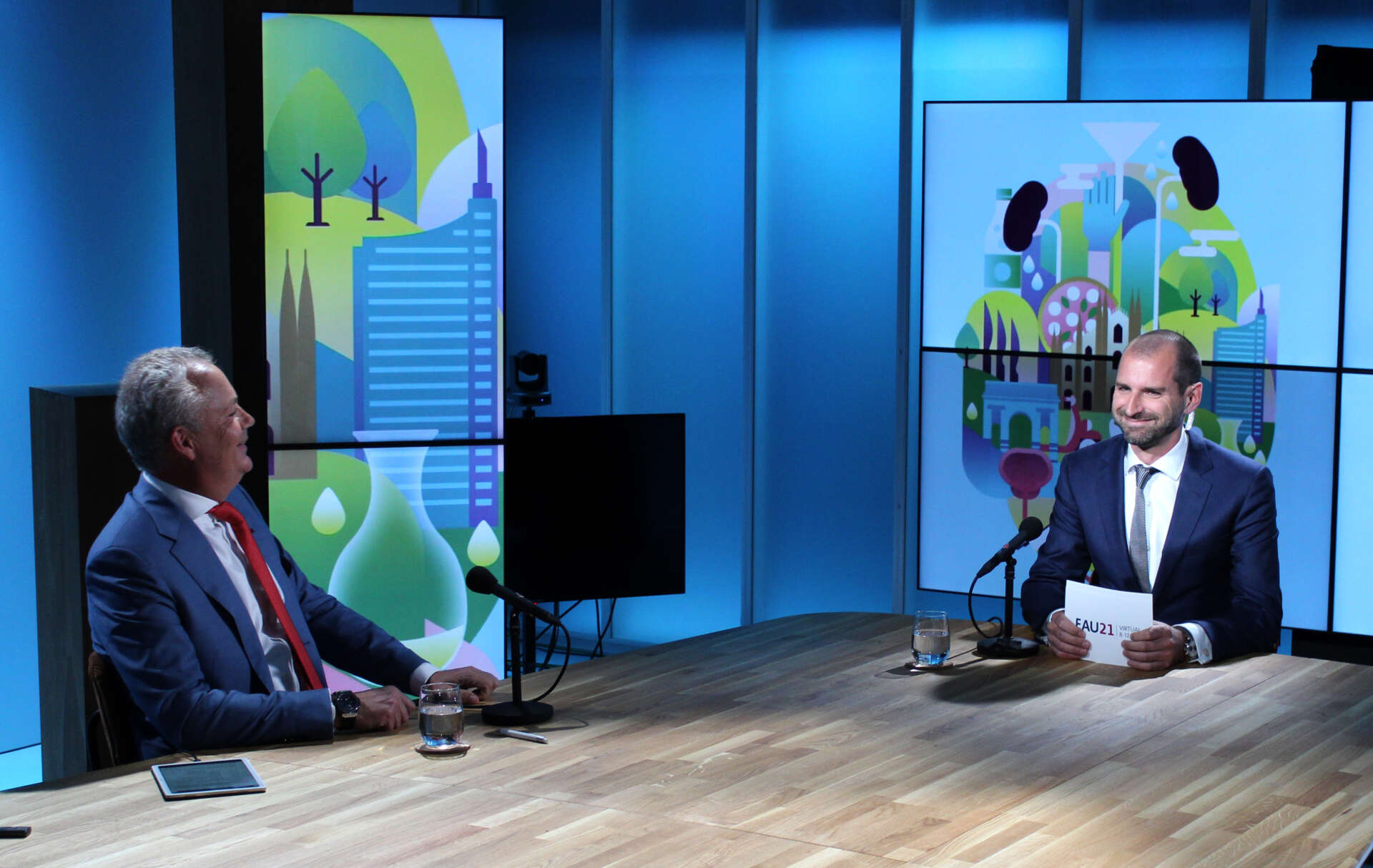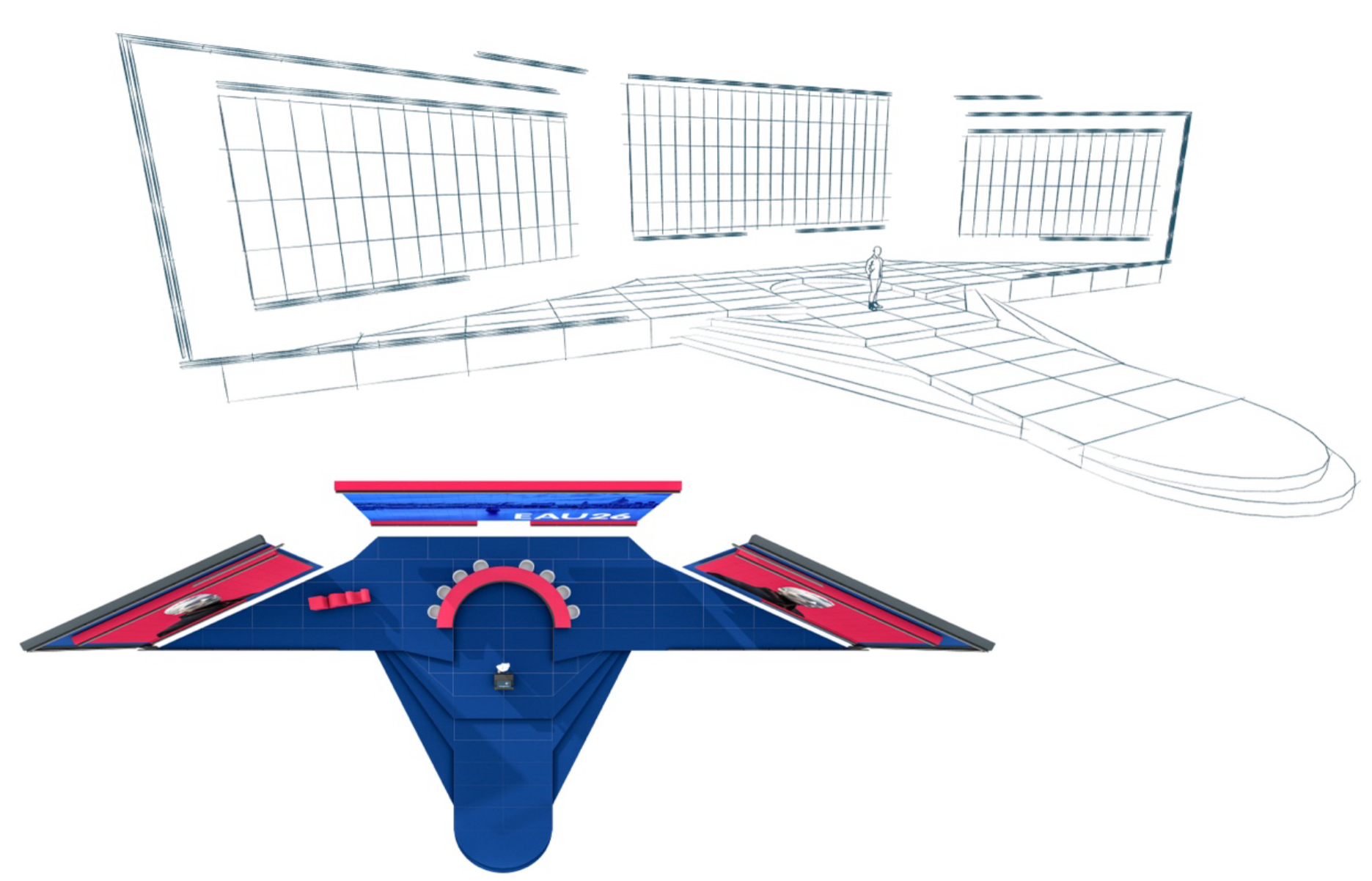“More than the sum of its parts”: Scientific Congress Office plans further innovations for EAU26 in London
Preparations are in full swing for the upcoming 41st Annual EAU Congress in the British capital. In five months’ time, Europe’s largest urology event will welcome experts from all over the world. Key to providing the best congress experience every year is evolving to meet audience expectations. Not just in terms of the latest and best scientific content, but also in engaging the audience in new ways.
Prof. Maarten Albersen (BE) has been chair of the EAU Scientific Congress Office since 2024, and EAU25 in Madrid was the first to be held under his ‘scientific responsibility’. There, delegates could already see the first changes that he had in mind, such as the introduction of scientific tracks in the programme, a new online interface and the introduction of the EAU Lab. In this interview, he talks about further changes to the EAU Congress format that the Scientific Congress Office is preparing.
How were the changes at EAU25 received? What sort of feedback did you get from delegates, members and your SCO colleagues?
EAU25 in Madrid was in many ways a transitional edition: it was the first Annual Congress where the entire scientific programme fell under the responsibility of the Scientific Congress Office. We took that opportunity to make some important steps towards a more personalised and coherent congress experience.
We introduced scientific tracks, a redesigned online programme interface, and the new EAU Lab, which was conceived as a platform to foster stronger interaction between translational and basic scientists and clinicians. It’s an area we will continue to develop in the coming years.
Overall, the feedback was very positive. Delegates appreciated the improved overview and the possibility to navigate the programme according to their own profile and interests. The track structure helped many to find consistency within the breadth of content. At the same time, feedback also pointed to a continued wish for further optimisation of scheduling, reduction of session overlap, and especially for more interactive formats and innovative ways of delivering information, moving beyond the traditional, rather static stage setting that has long characterised the large eURO auditoria.
What are your priorities for the congress experience this year?
For EAU26, our main priority is to make the congress experience more personal, dynamic, and engaging. The EAU Annual Congress has long been recognised for its scientific excellence, but we also want delegates to feel that the way this science is delivered, discussed, and experienced is constantly evolving. The congress should not only inform but also inspire, offering a sense of belonging to a broader European urological community that is alive and connected. We will therefore continue to invest in formats and settings that promote genuine interaction.
Another key focus is strengthening the bridge between the EAU, academia, and industry. The Annual Congress should be the platform where the results of both large, industry-driven trials and investigator-initiated studies are presented and discussed in a balanced and independent scientific environment. By doing so, we aim to ensure that the most relevant, practice-changing evidence — whether generated by academic consortia or by major sponsors — reaches our delegates first, in a context that highlights its implications for daily clinical practice.
What can delegates expect from this desire for increased interaction, for instance in the Plenary Sessions?
The Plenary Sessions remain the flagship moments of the EAU Congress, but this year we wanted to rethink how they are delivered. Traditionally, plenaries have been high-level but also rather formal and one-directional: excellent for transmitting knowledge, yet less suited for interaction or capturing the personality and spontaneity of our leading experts.
For EAU26, we are introducing a new mix of formats designed to make the Plenary Sessions more dynamic, more diverse in tone, and easier to follow. In addition to the established State-of-the-Art lectures and panel discussions, we are introducing Spotlight Talks: concise, visually strong presentations that highlight a single key message or breakthrough rather than a comprehensive overview. These will be complemented by Live Interviews, in which moderators or journalists will engage key opinion leaders in real-time discussions, allowing for more authentic and personal insights behind the data.
Prof. Albersen (right) interviews then-ERUS Chair Prof. Alex Mottrie in Hilversum, the Netherlands in the summer of 2021. The EAU21 Virtual Congress pioneered a talk-show format out of necessity but the interaction and dynamism will now find its way into the EAU26 Plenary sessions as well.
Some plenary blocks will also adopt a talk-show or round-table format, bringing multiple perspectives — clinical, scientific, patient, policy — into a single conversation. The intention is to foster genuine debate and curiosity, making plenaries not only informative but also memorable and enjoyable to attend.
Ultimately, the aim is to move away from the idea of plenaries as static lecture series and to turn them into true anchor points of the congress day — places where delegates come together to experience science being discussed and challenged in real time.
These innovations will be accompanied by a new stage design. Can you already paint a picture for us?
Yes, the new plenary formats come with a completely redesigned stage concept. We realised that if we want sessions to feel more conversational and immersive, the environment itself has to invite that. The classic auditorium setup — a lectern, long tables, and static slides — no longer fits how people engage with science today.
Artist’s impression of one of the eURO Auditorium stage designs featuring catwalk extension and the round discussion table.
The new design is open, flexible, and modular, allowing the stage to transform depending on the session type. For live interviews or talk-show settings, speakers will be seated around a central discussion table, surrounded by the audience rather than separated from it. For the new spotlight Talks and keynotes, the stage will now feature a catwalk extension, bringing speakers physically closer to the audience and creating a stronger sense of connection.
We are also introducing true debate formats: more dynamic exchanges that rely on real-time interaction between speakers, similar to what you might see during televised election debates. These will be supported by improved camera direction and lighting, capturing reactions and dialogue in a way that makes the experience more engaging for both the live and online audience.
Overall, there will be fewer slides, more spontaneity, and a greater focus on storytelling and visual communication. The combination of dynamic stage movement, interactive discussions, and professional-level production aims to make plenary sessions not only scientifically valuable but also energising and memorable.
The plenary stage will feel less like a lecture theatre and more like a live studio, a place where science, personality, and performance come together.
As SCO chair, what do you see as the real pillars of the Annual EAU Congress? What sets it apart from other scientific meetings?
The EAU Annual Congress is unique in its scale, diversity, and integration. It’s not just a scientific meeting; it’s where every dimension of urology comes together: science, education, clinical practice, innovation, and policy. That breadth and coherence are what truly set it apart. If I had to define the main pillars, I would name scientific excellence, education, and community.
Scientific excellence means presenting the most up-to-date and practice-changing evidence, including results from major industry-sponsored as well as investigator-initiated trials. Our congress has become the European stage where new data are first discussed and contextualised for daily urological practice.
Education is anchored by the European School of Urology (ESU), which offers an unparalleled number of hands-on and instructional courses. The combination of high-level science and practical skills training under one roof is something very few medical congresses achieve.
And finally, community reflects the fact that the EAU Congress brings together thousands of delegates from across the world: clinicians, researchers, nurses, patients, and partners. That diversity of perspectives ensures that innovation and inclusivity go hand in hand.
Aside from these three pillars, the congress of course distinguishes itself through its live surgery sessions, cross-disciplinary tracks, and a strong emphasis on emerging talent. We offer a big platform to young urologists, early-career scientists, and multidisciplinary teams. The way these elements connect is intentional: every part of the programme, from abstract sessions to plenaries and ESU courses, contributes to a coherent scientific journey.
Ultimately, the EAU Annual Congress is more than the sum of its parts. It is the place where the future of urology — scientific, educational, and professional — is shaped together, year after year.



